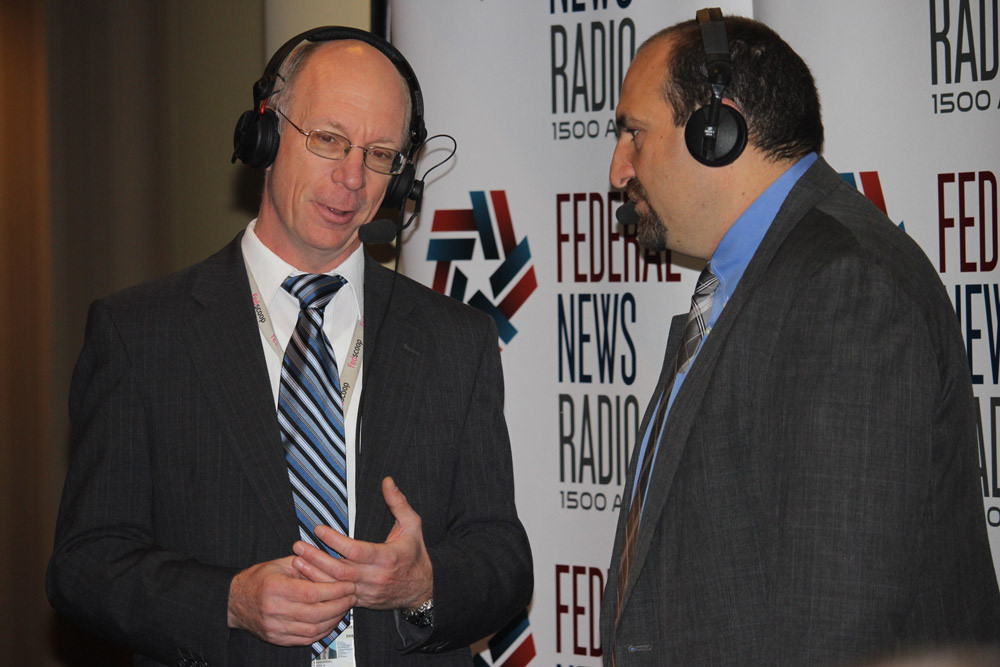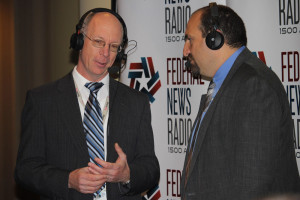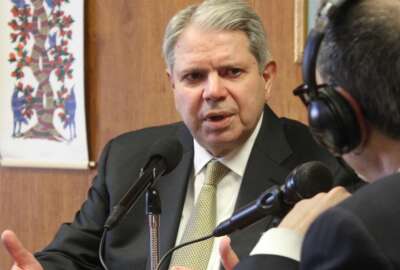
CBP’s Borkowski to retire after 43 years
Mark Borkowski (left), the chief acquisition officer and assistant commissioner of the Customs and Border Protection directorate in the Homeland Security...
Mark Borkowski, the chief acquisition officer and assistant commissioner of the Customs and Border Protection directorate in the Homeland Security Department, is retiring after almost 43 years of federal service. Borkowski’s last day is June 30.
In an email to staff obtained by Federal News Network, Borkowski said he had been thinking about retiring for the last several years, but decided now was the right time given what CBP has achieved.

“As many of you recall — since many of you were here — we built this completely new office starting in about 2010. We created governance structures and developed critical acquisition competencies that didn’t exist before. This was daunting — we faced resistance and many challenges — but I think we pulled it off,” Borkowski wrote. “However, 13 years leading this organization is probably not healthy for the organization. At some point, it’s time to look for a new leader to bring in some fresh ideas. This is the time.”
There is no details about who might replace Borkowski, even on an acting basis.
Borkowski served 23 years in the Air Force rising the rank of colonel before becoming a civilian employee in 2004.
He has been with CBP since 2006, starting as the lead for the Secure Border Initiative. Four years later, he became the assistant commissioner of the Office of Technology Innovation and Acquisition.
Borkowski has been the assistant commissioner for acquisition and CAO since 2016.
“I have been thinking about retiring for the last several years — but the volatility we have been experiencing (most notably, the COVID pandemic), made me think it was better to stick around for the sake of stability. Now that we are coming to post-pandemic equilibrium, this is a good time for me to leave,” he said.
During his time as CAO, Borkowski likes to say he focused on big “A” acquisition issues rather than worrying about procurements and contracting.
At the recent Centre Law and Consulting annual review, Borkowski said he constantly tries to engage with the buying activities and program managers to address their challenges.
“It might mean we go buy something, and if so we’ll use procurement to help us with that. But there’s a whole analysis that we have to go through about, what exactly is the problem? What’s the best way to solve the problem? And then sometimes we contract to solve a problem, that’s acquisition,” he said. “The difference between procurement little ‘A’ acquisition and big ‘A’ acquisition isn’t much. Neither is higher or lower than the other. They’re supposed to be mutually reinforcing.”
Borkowski has helped lead every major border technology and acquisition initiative since 2004 starting with SBI. In between, he’s also helped CBP deal with an assortment of challenges from supply chain to workforce to the digitization of the acquisition process.
Additionally, Borkowski created a stronger oversight and governance for acquisition programs.
He implemented the RACI matrix — responsible, accountable coordinates and informs — that ensures everyone who is involved in the project knows their roles and lives up to them.
“The reason we were asked to do that is because the senior leadership started to understand that procurement can’t do their job, if Fred doesn’t do his job or if Jason doesn’t do his job. For a classic procurement action, senior leaders want to know who are the stakeholders? Who’s responsible? Who’s accountable? Because the senior leadership now wants to have better insight and they want to be educated. That’s why we’re doing it. They want to be educated, so that they can support us in holding people accountable, other than just procurement. That’s the intent.”
Borkowski added CBP applies the RACI matrix no matter the size of the procurement effort because the same rules apply.
“Somebody’s response. Are we getting requirements in on time? Somebody’s responsible for us documenting those requirements. Somebody’s responsible for preparing this document,” he said. “That’s true for any procurement, regardless of dollars. That’s what we’re trying to communicate to people.”
Copyright © 2025 Federal News Network. All rights reserved. This website is not intended for users located within the European Economic Area.
Jason Miller is executive editor of Federal News Network and directs news coverage on the people, policy and programs of the federal government.
Follow @jmillerWFED
Related Stories
 Exclusive
Exclusive 



